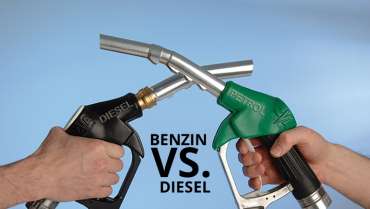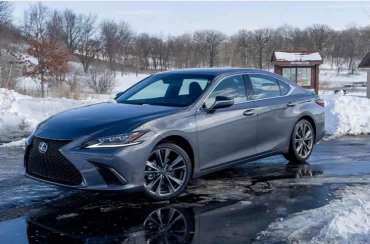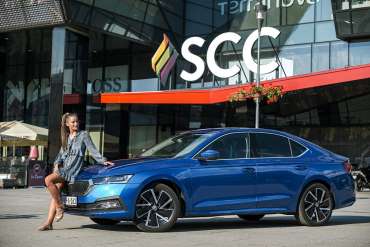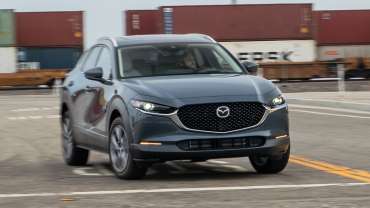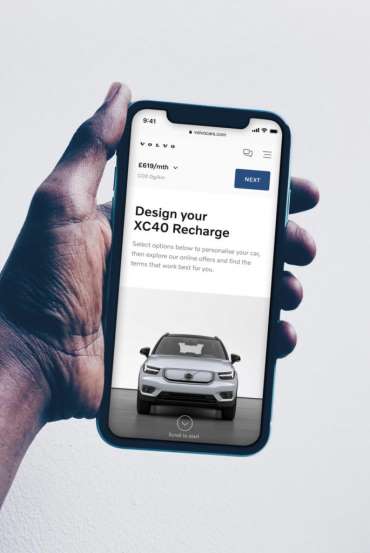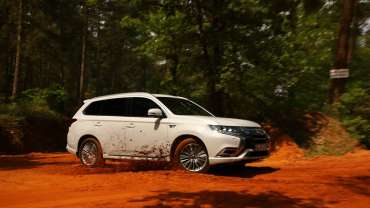
Worldcarblog.com
Petrol or Diesel - eternal doubt, which is better !?
You’re thinking about buying a new car, and so far you haven’t thought about the engine and the differences between a gasoline and a diesel engine. We may bring you a little closer to the advantages and disadvantages of the same to make the decision easier. In the end, your opinion and experience will be of great help to us in answering the eternal question of gasoline or diesel?
DIESEL
Diesel engines have a longer range, as they consume slightly less fuel than a classic petrol engine, and at the same time your full tank will last longer. 25 to 30% better economy compared to a petrol engine. Also, a diesel engine will in some cases be more economical and efficient than hybrid vehicles that combine a petrol and electric engine, of course depending on the model and the fast-growing technology that is changing the picture of consumption day by day.
Although until recently diesel was cheaper than gasoline, the story has not been in favor of this lately. The prices are approximately the same, so there is not much difference in that range. Diesel fuel is used in many more industries than gasoline, in addition to its use in road traffic, which causes prices to rise.
Definitely today the price is not a big difference, yet diesel fuel should achieve 25 to 30% higher price in order to lose the difference in economy. Diesel fuel is considered more efficient because it contains more benefits from the heat energy it generates.
Of course, the above works better, but in a real situation the heat generated by high-pressure auto-ignition in a cylinder differs from the explosion in a cylinder generated by gasoline fuel under the influence of spark plug and fuel air, so diesel fuels do not result in such high performance. engines, but modern diesels offer higher torque. Gasoline engines tend to be large, fast, and powerful, while diesel engines are slower and more durable.
As we have said, diesel engines do not have a spark plug, so there is no need to change it, ie the cause of not starting the engine should be sought in that part. Diesel engines are also easier to withstand high pressure and compression and most often the engines last longer than conventional gasoline without major repairs. You may not need to cover 500,000 km with a single vehicle, but it is certainly of great importance when assessing a vehicle in the event of a sale.
If you ignore some of the advantages listed above, you should not be surprised by more expensive maintenance during repairs, because diesel engines are technologically a little more advanced or more demanding.
PETROL
Purchase cost and fuel consumption. The initial cost of purchasing a gasoline engine is lower, however its consumption will later be slightly higher compared to the same engine power.
Fuel is easily available at all gas stations in several different qualities, and the winter months make almost no difference in terms of repairs because there are no problems with ignition.
Maintenance and parts are somewhat more economical in nature, but require somewhat more frequent inspection of the engine and all associated units. Starting the engine is of a different nature, so the service intervals could be a bit shorter.
Spare parts are often cheaper and more readily available. Gasoline engines have a higher regulated speed and a more flexible engine.
Less torque, less vehicle weight more easily transfer power to the ground. Easier to start the vehicle in cold weather.
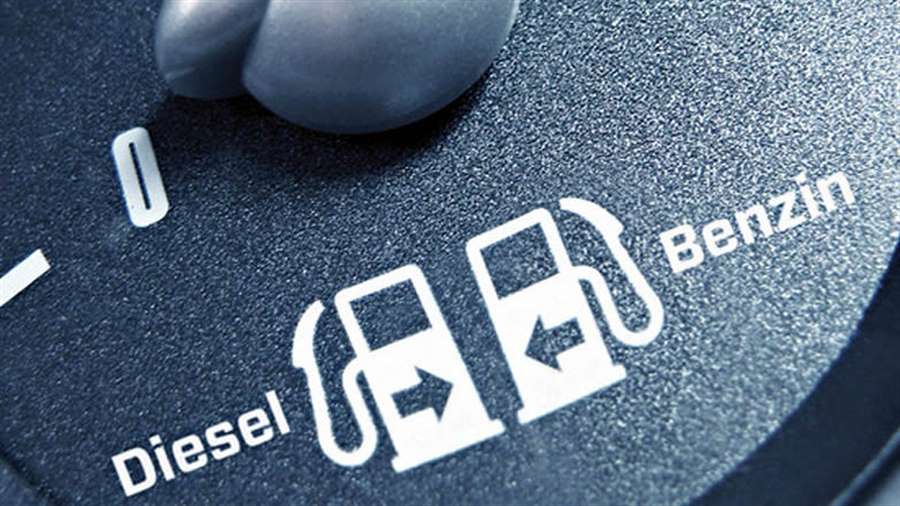
Everyone should decide what is best for them and what their individual needs are. Personally, it is necessary to do a little research before buying a vehicle is realized. We are sure that no one is aiming to spend a few thousand or tens of thousands of kunas, only to realize afterwards that you have made a mistake. Take enough time, even when these seemingly insignificant segments are in question, but you will certainly be more satisfied if you adapt exactly what you need to yourself and your needs.
Also keep in mind what the needs are in relation to the daily use of your vehicle; the highway, city driving, the environment in which you drive, what exactly you need the vehicle for, the purpose, the expected lifespan and the frequency of use, are all reasons that are very important to think about beforehand.
2021 Lexus ES 250 AWD Review: A Peculiar but Needed Lexus ES
The verdict: The 2021 Lexus ES gets all-wheel drive for the first time, though it might not be what you’d expect: Four-wheel traction is paired only with a noisy, modestly powered four-cylinder engine.
Versus the competition: With disappearing competition, the ES remains one of the last large, affordable luxury cars on the market that isn’t hellbent on being sporty.
The 2019 redesign of the Lexus ES made it a more accomplished luxury car with a higher-quality interior and improved isolation from road and wind noise, but that wasn’t the end of the updates for the ES: For 2021, Lexus has added a gas-only four-cylinder model, called the ES 250, that brings all-wheel drive to the party for the first time. Strangely, it’s not really appropriate to call the four-cylinder a “base” engine, because the ES 250 with AWD has a starting price identical to the front-wheel-drive-only V-6 ES 350, at $41,025 (all prices include destination charges).
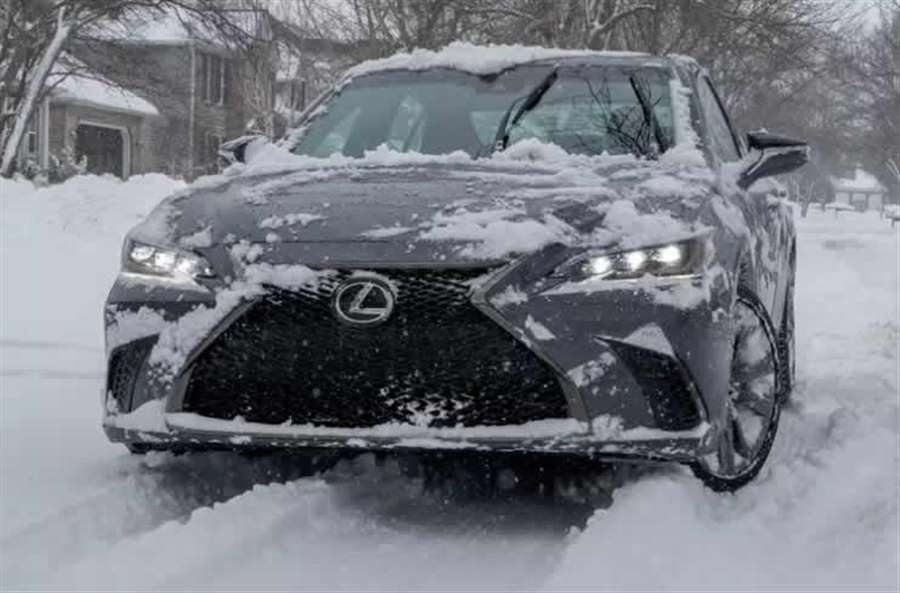
The ES faithful will find this newest AWD, four-cylinder variant very different from what they’re used to, but the ES faithful may not be the market for the new version. Mid-size luxury sedans aren’t exactly a hot ticket right now, as luxury and non-luxury automakers alike have increasingly turned their focus to SUVs. The ES 250 may instead serve multiple consumers: buyers looking for SUV-like all-season capability in a familiar sedan package, and those looking for an alternative to the discontinued Lexus GS, which was previously Lexus’ sportier mid-size sedan. (The ES F Sport variant will be the best bet for these shoppers.)
All-wheel drive is new for 2021, but it’s only available with the also-new 2.5-liter four-cylinder engine that makes 203 horsepower and 184 pounds-feet of torque. Strangely, the ES 350’s accomplished and refined 3.5-liter V-6, which often overpowers the front tires on that car, can only have front-wheel drive. The ES 250’s power is a bit underwhelming for a 3,780-pound sedan — a Toyota RAV4’s power-to-weight ratio is more favorable. In my experience, though, the Lexus’ eight-speed automatic transmission reacts more quickly while passing than in similar front-wheel-drive Toyota/Lexus applications, so the four-cylinder doesn’t feel underpowered. It’s not as rewarding an experience as you get from the base turbocharged four-cylinders in the BMW 3 Series or Audi A4, and the ES 250’s grainy-sounding four-cylinder is unbecoming of the otherwise buttoned-up sedan.
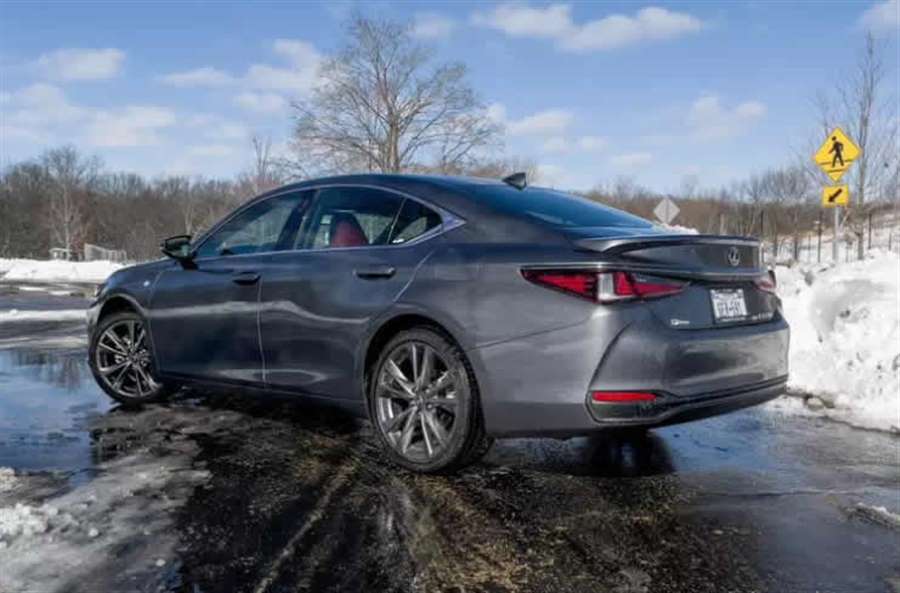
In other cars, Toyota’s 2.5-liter is a commendable engine with surprising torque and linear power delivery, but it seems mismatched in the ES thanks to its rough soundtrack. Both during moderate acceleration and near redline, the engine wheezes through its powerband. That’s less of an issue in the non-luxury setting of parent-company Toyota’s cars and SUVs, where this engine more frequently appears, but it stands out in the Lexus. Competitors’ turbocharged four-cylinders don’t have to rev as high or as frequently, and turbos — driven by exhaust gases — act as an additional muffler to help hide ugly engine sounds. The Lexus is not turbocharged.
The ES 250’s power and acceleration deficits are substantial compared with the ES 350, making 99 fewer horsepower and 83 fewer pounds-feet of torque (the V-6 is rated 302 hp and 267 pounds-feet of torque). Lexus says the ES 250 accelerates from 0-60 mph in 8.6 seconds, making it the slowest ES in the lineup. The ES 350 makes that run in 6.6 seconds, and even the ES 300h hybrid sprints to 60 mph in 8.1 seconds. The hybrid also uses a 2.5-liter four-cylinder, but it pairs with an electric motor for a combined 215 hp. Two seconds slower to 60 mph is a difference you feel in the seat of your pants. In addition to having the least power in the lineup, the ES 250 AWD is also the heaviest ES — by 90 pounds over the 350 and 50 pounds over the 300h.
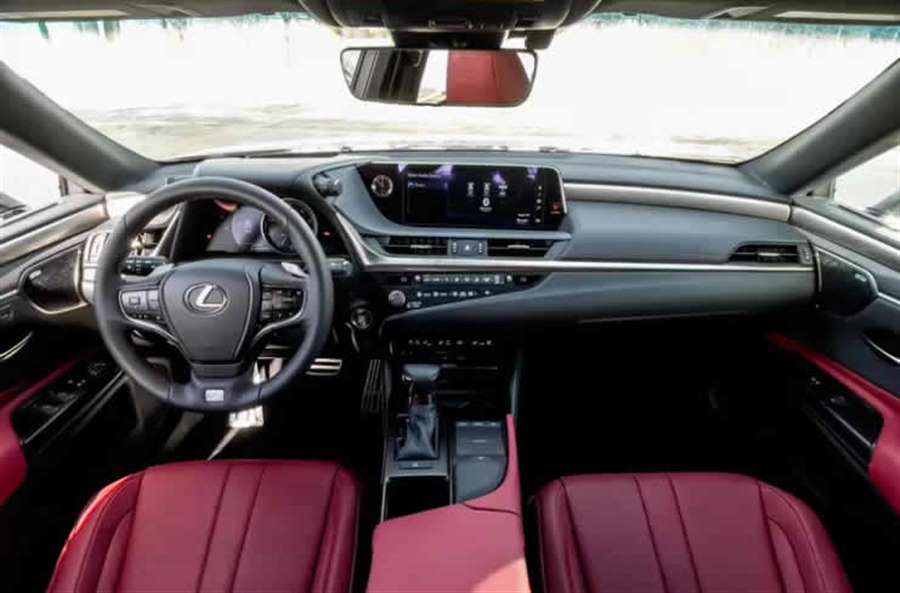
The second attribute making the ES 250 unique is its new all-wheel-drive system, which can direct as much as 50 percent of the engine’s torque to the rear wheels for traction. I put the ES 250’s AWD to the test during a snowstorm that dumped 8 inches of snow overnight, burying the Lexus to its rocker panels in wet, heavy snow. The ES did its job clawing out of my uncleared driveway and unplowed neighborhood streets, all the way to a major street that had been plowed — and that’s really all this kind of system needs to do.
It wasn’t flawless, though. The snow scraped the car’s underbelly thanks to its sedan ground clearance, and it hesitated briefly when accelerating from a stop as the all-season tires spun for grip. It was slowed by its traction control system, but the ES eventually gained steam without having to change drive modes or disable traction control for more wheel speed.
The ES 250’s all-wheel-drive system is a now-common type with front-to-rear torque transfer and the ability to decouple for increased fuel economy. It’s the same type you’ll find on the related Toyota Avalon and smaller Toyota Camry, but it’s really more similar to the AWD systems you’d find on small SUVs — not so much a performance-minded luxury sedan. The Acura TLX, for example, has a mechanical torque-vectoring rear axle for on-road dynamics, and the discontinued Buick LaCrosse was an odd host for impressive dynamics with its twin-clutch torque vectoring rear axle (RIP). The ES 250’s system does little, if anything, for on-road performance driving — but it isn’t much needed, considering that on dry roads the less-powerful four-cylinder mitigates the ES 350 V-6’s power-on-traction disadvantage anyway.
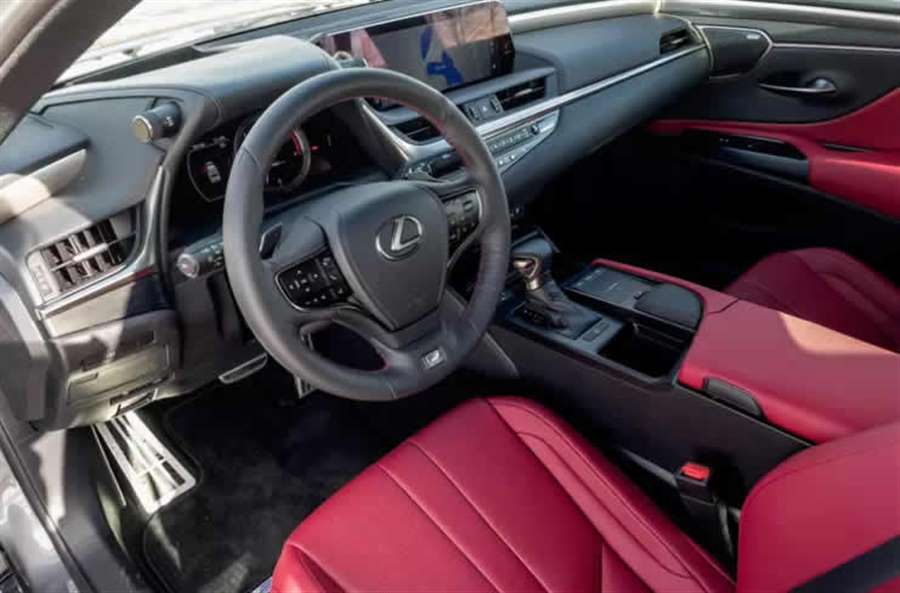
Other than driveline, much of the ES 250 AWD is unchanged from the ES 350. The same is true of the 250 F Sport I drove, which uses the same wheels, tires and suspension tuning as the 350 F Sport, though the ES 350 F Sport is also available with an optional adjustable firmness suspension. The ES F Sport has a taut ride with more road feel than previous generations, but it’s not offensive or uncontrolled. It’s firm enough, however, that you’d best pass up the F Sport if you’re looking for the classic ES ride quality. The ES F Sport is essentially a proficient handling package, but it’s still not as eager to drive spiritedly as the outgoing rear-wheel-drive Lexus GS F Sport. That said, it also doesn’t crash over rough roads like other F Sport treatments (on the Lexus RC, for example), where large impacts shudder through the whole chassis. As a whole, the ES F Sport is quite livable.
What hasn’t changed with the new engine and all-wheel-drive system is the ES’ generous occupant and cargo dimensions for the price, though it doesn’t have a folding backseat like the related Toyota Avalon. The ES is considerably larger and more comfortable than a BMW 3 Series, Audi A4 or Lexus IS. In fact, few remaining competitors match the ES’ price-to-size ratio. The Buick LaCrosse used to, but it’s gone now. The previous-generation Genesis G80 was close, until its pricing ballooned with its 2021 redesign.
What’s left? The Cadillac CT5 (formerly the CTS) is a compelling alternative that has some of the comfort vibe of the ES, but with more balanced ride and handling and without having to splurge for an additional performance suspension option. The last CT5 I tested had the optional 335-hp, twin-turbocharged 3.0-liter V-6 with all-wheel drive, which Cadillac says goes from 0-60 mph in 4.9 seconds; as-tested, it stickered at $52,155. The ES 250 F Sport with AWD that I tested for this review cost $53,400, but it had a lot more advanced driver-assist tech than the CT5. The ES comes standard with full-speed adaptive cruise control and lane centering, and all trims except the base model have blind spot monitoring with rear cross-traffic alert.
Little else on the ES has changed since 2019, which means it has a commendably rich interior for its price; it showed off well in our test car’s red interior. I can’t say the same about the CT5. The ES, however, remains saddled with a touchpad-based multimedia and control system — no touchscreen. The available 12.3-inch screen is at least high resolution, and it includes Apple CarPlay and Android Auto. It’s easy to view while driving, if hard to control. Lexus may be at a turning point, however, as the RX SUV received a well-done touchscreen for 2020 without a major redesign to the whole car, which means there’s hope yet that this major sticking point will be resolved with an update in the (near?) future.
Should You Buy the ES 250 AWD or ES 350?
In the weirdest turn of the model year, the ES 250 and ES 350 have identical pricing, both starting at $41,025. Their standard features are nearly identical, but the ES 350 can be equipped with a panoramic glass roof and adaptive shocks, while the ES 250 can’t. As for gas mileage difference, it’s minor: The ES 350’s 22/32/26 mpg city/highway/combined is only 2 mpg combined less than the ES 250’s 25/34/28 mpg. Both cars make their maximum power on regular octane — not premium, like most luxury cars — so between the two powertrains you’re looking at an estimated gas price difference of only $100 per year, based on 15,000 miles a year at current fuel prices: $1,350 for the ES 250 and $1,450 for the ES 350. So, if fuel economy and price aren’t much of a consideration, what is? Honestly, it’s whether you need AWD.
If you have good snow removal — or little snow — and flat ground, a FWD ES 350 with good tires (all-seasons rated well in snow or dedicated winter tires) will most often be fine. All-wheel drive is most useful in deep snow or on roads/driveways with inclines. If you don’t need AWD, there’s little reason to consider the four-cylinder ES, given it’s not less expensive, it’s considerably pokier and louder, and its AWD doesn’t make the ES a more engaging sports sedan on dry roads. What it does do, however, is make the ES more appealing to a crowd that would otherwise be looking at an SUV. There’s comfort knowing you’ll be ready for just about any weather condition, and the ES 250 starts a full $5,000 less than a comparably sized mid-size Lexus RX SUV.
As for its qualifications as a GS 350 replacement, the AWD ES 250 is pretty far off. There’s no hope on the horizon for GS loyalists, either, as a Lexus spokesperson says there are no plans to add AWD to the ES 350 in the near future.
Skoda Octavia selected for "Family Car" as part of the selection for "Women's World Car of the Year"
The SKODA OCTAVIA won the “Women's World Car of the Year 2020” award in the “Family Car” category.
This is the first success for the Czech car manufacturer within this international award, which is being awarded for the tenth time this year, and which is awarded exclusively by professional car journalists. As one of a total of nine winners in individual categories, the ŠKODA bestseller is now competing for the main prize: the winner of the main award "Women's World Car of the Year 2020" will be announced on March 8 on the occasion of International Women's Day. The jury consists of 48 journalists from 38 countries from Argentina to New Zealand.
The "Women's World Car of the Year" award has been given since 2011, and the jury consists exclusively of professional car journalists. This year, 48 members of the jury from 38 countries evaluated all nine models that were presented between January and December 2020, and first nominated three finalists in each of the nine categories at the beginning. In the "Family Car" category, the OCTAVIA model won and thus qualified as a candidate for the main prize.
The evaluation criteria are, for example, safety, quality, price, design, driving comfort and environmental friendliness.
2020 Mazda CX-30 Road Trip Review: When Driving Doesn’t Matter
On the open road, our long-term Mazda CX-30 keeps its driver involved—too involved.
Mazda no longer uses "Driving Matters" as its tagline (now it's "Feel Alive"—already do, thanks), but that ethos is still imbued in every one of its vehicles. We agree with that mantra—mostly. Sometimes we'd trade involvement for relaxation, particularly when enduring long highway stretches as we've now done for several thousand road trip miles in our long-term 2020 Mazda CX-30. Turns out that when driving doesn't matter, this subcompact crossover is less than ideal.
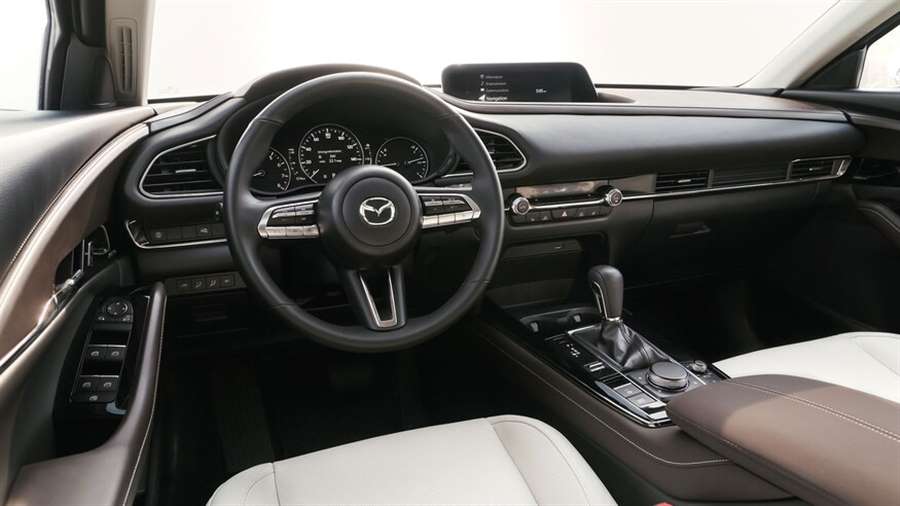
Nice as the CX-30's accurate, reactive steering is on a twisty road, managing it becomes a chore when coursing dead ahead. Lane-keep assist can be an awesome help in these scenarios, and the CX-30's spec sheet shows it as standard equipment. But on my recent drive between Los Angeles and San Francisco it did basically nothing, providing such minimal assistance that I checked a few times to see if it was turned on (it was). Other than gentle nudges seemingly at random, lane keep assist would allow the car to drift across markers with nary a beep. Autopilot this absolutely isn't.
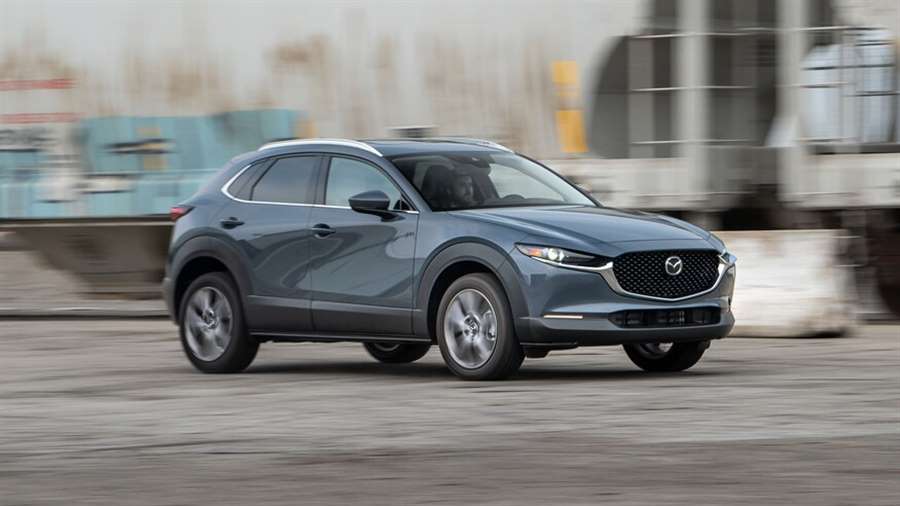
The CX-30 is also equipped with adaptive cruise control, which I came to call brake-check assist because of how committed it is to resuming its set speed after accelerating to pass. Instead of coasting down, the CX-30 brakes to reduce speed, causing some drivers I passed to brake in response. I'd have to override the car's action by applying throttle myself. Eventually I started turning adaptive cruise control off when passing, lest other drivers think I had a bone to pick—all involvement that systems like these are intended to negate. At least the blind-spot monitors effectively detect vehicles obstructed by the huge D-pillars.
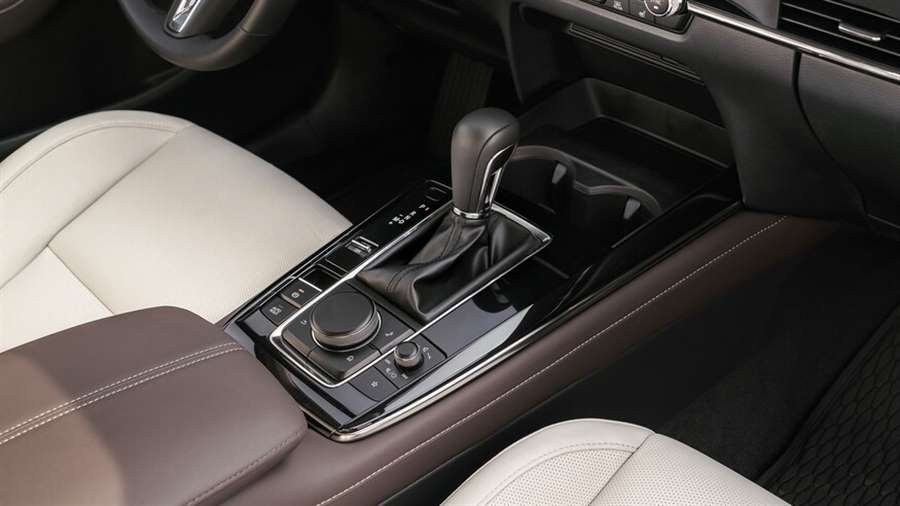
How Far Can The CX-30 Go On A Tank Of Gas?
Our logbook shows that the CX-30 struggles to cover more than 300 miles between fill-ups. I eked out 317 miles at best, but photographer Darren Martin reported refueling every 280 miles or so on his hilly trek from Los Angeles to Oregon. Given its 12-gallon tank, the CX-30's approximately 25-mpg average isn't impressive for a subcompact SUV. Long-haulers might find this Mazda's range frustratingly small, but I don't mind stopping to stretch about that often.
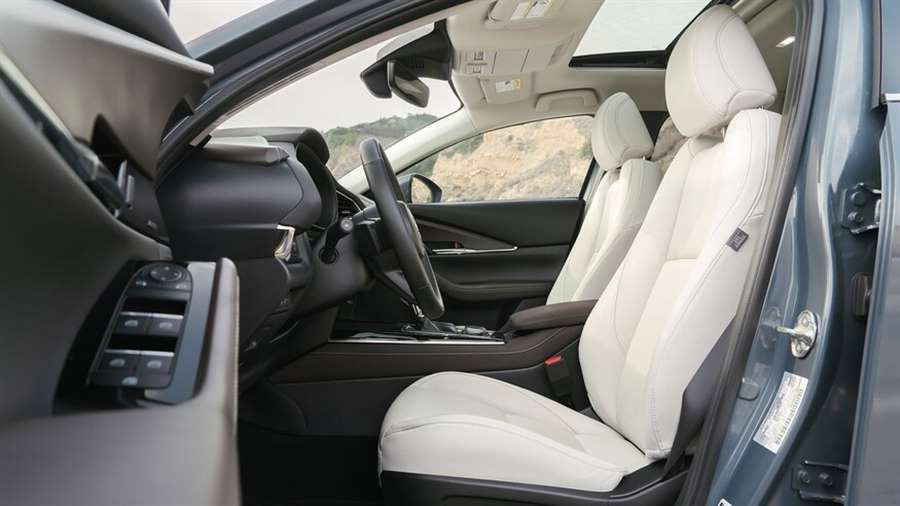
Thankfully the driver's seat kept my stretch breaks from becoming lengthy vinyasa sessions. The CX-30's front seats don't look all that special, but they feel excellent, providing ergonomic support all down the back. Their padding is neither too firm nor too plush, insulating nicely against the often busy ride. Cushy armrests and a leather-wrapped steering wheel made the CX-30 a nicer place to pass the miles.
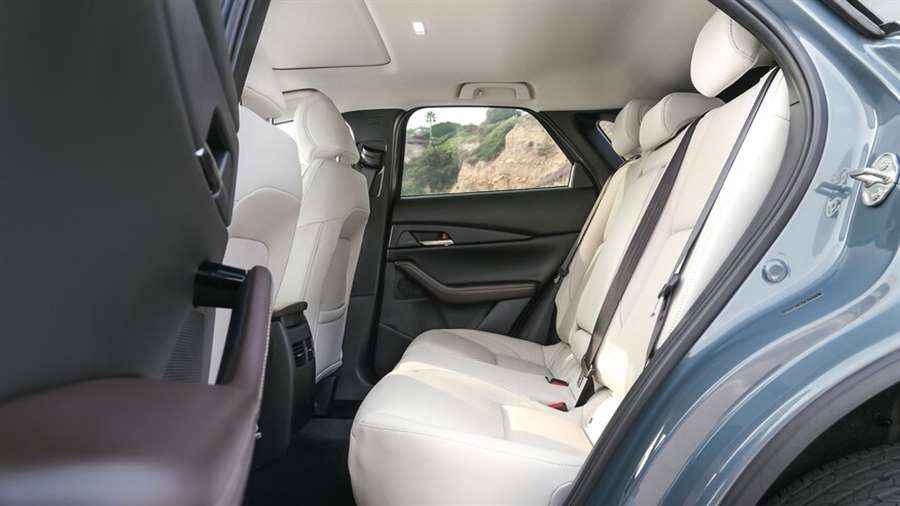
Too Sporty For Its Own Good?
On my solo road trip the CX-30 was just spacious enough to fit my luggage in the passenger seat and wheels-removed mountain bike over the folded-down second row. Fortunate that was, as my long weekend concluded with a trail ride in Santa Cruz. Carving toward the coast over forested Highway 17, the CX-30's pep and agility reminded me why driving matters. But afterwards, drained and digesting a post-pedal burrito, I just wanted to chill. Little such luck—the Mazda's involving setup kept me overly alert for the next several hours.
Our experience indicates that the CX-30 is better for around-town zipping than long-distance cruising. We'll see if that balance shifts as we pack on more miles.
Volvo from 2030 on electricity only. And the possibility of shopping only online
Don't use the Internet and have nowhere to charge your car? Forget Volvo.
Okay, if you don’t use the Internet, you won’t read anything new and you won’t have anything to regret. But Volvo is really turning its business around.
From 2030, every new Volvo will be electric
News has arrived from Sweden that Volvo Cars will be committed to becoming leaders in the fast-growing premium electric car market with a plan to become a fully electric car company by 2030.
Until then, the company will gradually phase out models with internal combustion engines, including hybrids. At Volvo, they expect that legal solutions and the expansion of charging networks will enable this transition to electric cars.
For now, Volvo will only sell its electric vehicles online.
Volvo Cars last year launched its first all-electric car, the XC40 Recharge, in markets around the world. In the coming years, Volvo Cars will introduce several additional electric models. By 2025, the goal is for 50 percent of global sales to consist of fully electric cars, and the rest will be hybrids. By 2030, every car he sells should be fully electric.
And the role of the merchant?
The fight for clients is over - there will be nothing to negotiate here. The buyer buys the car at the price shown on the website, and the seller must prepare it, elegantly hand it over and then service it. In the meantime, they may organize a test drive to help those who are not satisfied by clicking on the page. Volvo emphasizes that the dealer network will be just as important as it is today, but the role of dealers will be limited because electric cars are much simpler. We wonder what interest the owners of car dealerships will have in this approach of the manufacturer?
New Mitsubishi Outlander PHEV review: the popular hybrid driven
The Mitsubishi Outlander is very much on trend. It's an SUV, and also a plug-in hybrid – but it actually arrived slightly ahead of its time. Here we're driving the current model, which is almost identical to the previous car aside from the lightest of facelifts and a few technological tweaks aimed at keeping ahead of emissions regulations. Why mess with success? It's an established big seller in Britain, although the rest of the range hasn't been doing so well, prompting plans for Mitsubishi to leave Europe. For now, though, this Outlander is a current model, available through the familiar dealer network. The question is, in a market that's now brimming with hybrid SUVs, does the
How can I spot a new Mitsubishi Outlander?
With difficulty. Mitsubishi’s goals for this version clearly didn’t include major styling changes. In fact, even sat next to a 2018-spec car, it takes a few moments to spot the newer LED headlights and the lightly tweaked front grille and bumpers. The new design for the wheels is the biggest giveaway.
Inside, there’s a tweaked instrument cluster, plus new air vents and a USB port for rear passengers.
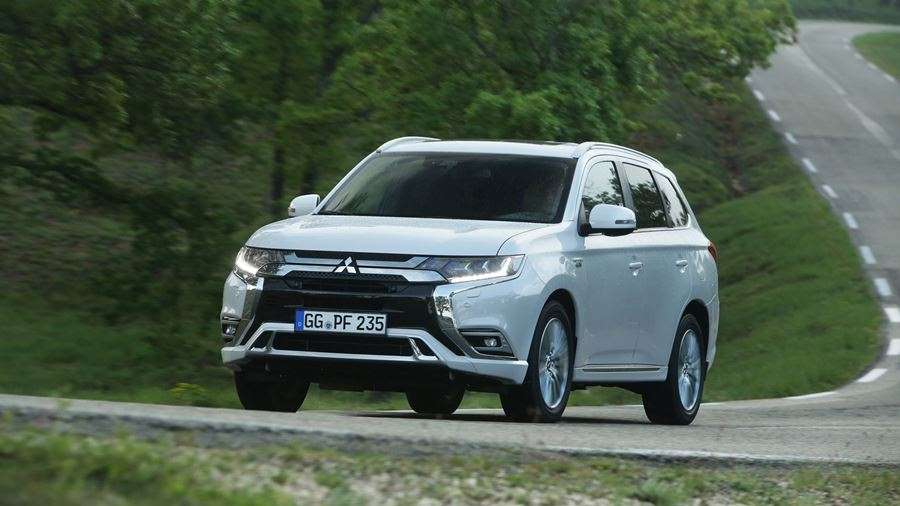
The sunroof has been relegated to the options list in an attempt to fend off the extra car tax premium buyers have to pay when pricing creeps above £40,000.
While we were impressed by the quilted leather upholstery on the seats of our test car, these are limited to the top-spec models costing north of £40k.
Still, the range starts at below £36k for the Verve, and the big-selling Dynamic version still comes in below £40k, and includes heated leather seats and a lot of safety and convenience equipment.
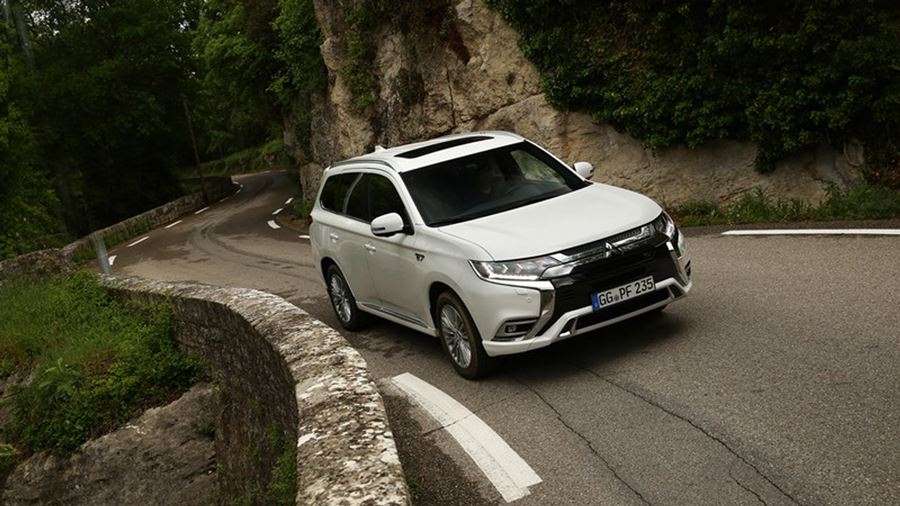
What’s the Mitsubishi Outlander hybrid like to drive?
It’s not that far removed from the previous generation, which we drove back-to-back with this latest verion, but in a couple of important respects improvements have been made. The first is in cabin refinement, because the current car is quieter, rides better and feels more solid than ever.
There’s been extra adhesive applied to the body-in-white (before painting) to strengthen the shell using an approach similar to that used in aircraft manufacture, and this has the effect of enhancing torsional rigidity, so the car flexes less through bumps and bends. The difference is slight, but worthwhile.
The tyres have changed from Toyo to Yokohama, there’s a quicker steering rack and the suspension has been recalibrated.
Doesn't sound like much of a big deal? But in fact the handling and body control have improved. The quicker steering is the most notable change, making this Outlander easier to thread through narrow roads. Road-noise intrusion levels have turned down a notch too.
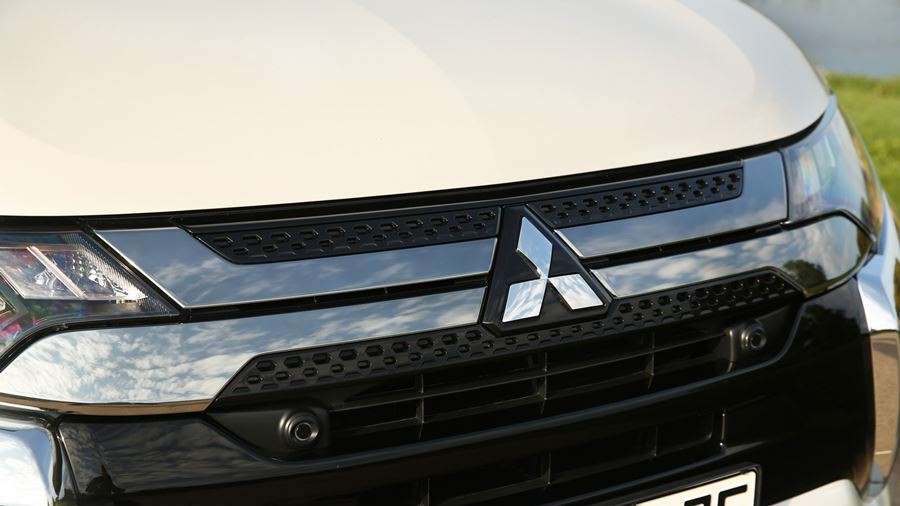
What has been sacrificed is the ride quality, which has become a bit busy on UK roads. It’s not uncomfortable by any stretch, but it feels far less settled than before. A fair trade-off for a bit more verve? Almost.
There’s a new Sport mode that offers a bit more punch, but this feels incongruous in light of the epic bodyroll that occurs when you hit a bend too quickly. An additional Snow mode prepares the capable chassis for slippery conditions.
You still get the paddles behind the steering wheel to adjust the brake regen’s effect, making one-pedal driving a possibility, and they’re still arguably backwards: the left one turns up the deceleration, whereas the opposite seems more intuitive.
Isn’t a new engine the biggest news here?
It would be, except it's rather a stretch to call this a new engine. Instead it’s an adaption of the old 2.0-litre petrol, with the latest Mivec (remember that badge from FTOs and Evos of yore?) variable valve timing added. The 2.4-litre engine can switch between Otto and Atkinson cycles, meaning it can make more power and torque when required (133bhp and 156lb ft up from 119bhp and 140lb ft in the 2.0) thanks to the extra CCs using the former cycle, but burn less fuel under lighter loads with the latter.
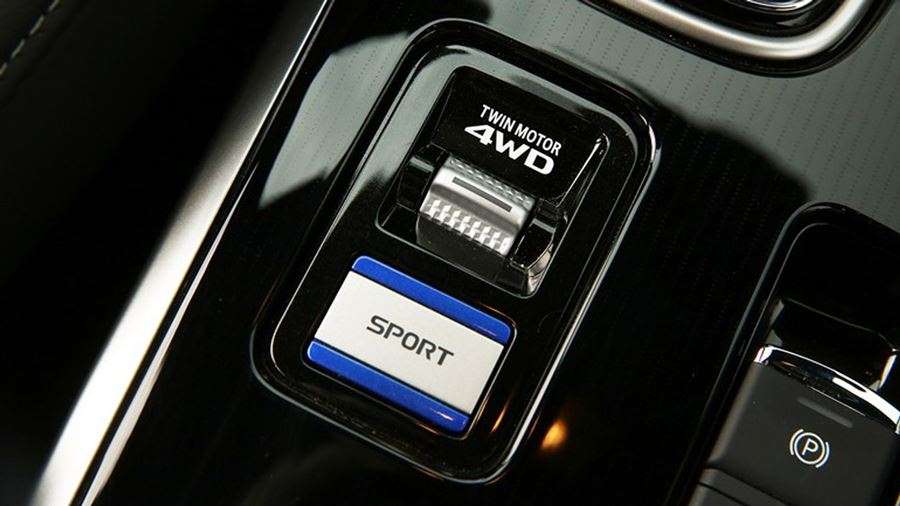
Which sounds great. And it is, except not literally. Put your foot down and you’re greeted with a monotone moan very similar to that of the old car, in that uniquely disappointing CVT fashion – lots of noise and not much acceleration. Only now, the noise is just a bit more distant than it used to be.
Funnily enough this isn’t a CVT either. It’s a fixed-gear system that drives power to the wheels, with a hydraulic clutch to modulate the electric twist provided by the twin motors. It’s built by GKN – the firm responsible for the Focus RS’s lively rear axle assembly, among many other applications.
The transmission catches up eventually and meaningful movement occurs, but it’s still no thoroughbred. The 0-62mph time has dropped 0.5 seconds to 10.5.
This engine revision plus work on the battery – which gets 10% more power output and total capacity of 13.8kWh thanks to new cells and better management – has allowed Mitsubishi to recalculate maximum electric range, fuel economy and CO2 emissions for the more realistic WLTP testing, and the results are more impressive for that reason. We’re talking 30 miles on electric power, 141mpg and 46g/km. You’re also able to drive faster on electric power – now 84 rather than 78mph.
The trade-off is it takes an extra 30 minutes to charge the car using a 16A/3.6kW charge point – this now takes four hours.
Mitsubishi Outlander hybrid: verdict
The latest Outlander PHEV doesn’t reinvent the wheel, but then it didn’t need to. It’s more relevant now than ever before as the push for plug-ins intensifies. And looking beyond the powertrain, the Outlander remains a decent if unexciting all-round package.
After Europe, the world chooses "Car of the Year": These are the semifinalists
After Europe chose "Car of the Year 2021", now follows the world selection. The semi-finalists are known, and we will get the finalists on March 30, while the ceremony of announcing the winner is expected on April 20. He looks at which car models are in the inner circle.
After we learned that the Toyota Yaris is the European "Car of the Year", the semi-finalists for the World Car of the Year have now been announced. The European winner is also shortlisted, and according to current estimates sent to this selection as the biggest candidates for victory, two electric models are also mentioned. Here is who is on the list:
- Audi a3
- BMW 2 Series Gran Coupe
- BMW 4 Series
- Honda e
- Kia K5
- Kia Sorento
- Mazda MX-30
- Mercedes GLA
- Toyota Yaris
- Volkswagen ID.4.
{vembed Y=G8vBBMooIW8}
At the same time, the selection for the "World City Car" is being held, and five finalists are known: Honda e, Toyota Yaris, Honda Jazz, Hyundai i10 and Hyundai i20.
Aston Martin DBX, BMW X6, Land Rover Defender, Mercedes S-Class and Polestar 2 were nominated for the title of the best in the class of luxury cars.
In the most interesting category of sports cars, the nominees are: Audi RS Q8, BMW M2 CS, BMW X5 M / X6 M, Porsche 911 Turbo and Toyota GR Yaris.
And finally, when it comes to design, these five models entered the semifinals here: Honda e, Land Rover Defender, Mazda MX-30, Polestar 2 and Porsche 911 Turbo.
The finalists will be announced on March 30, and the winner on April 20.

